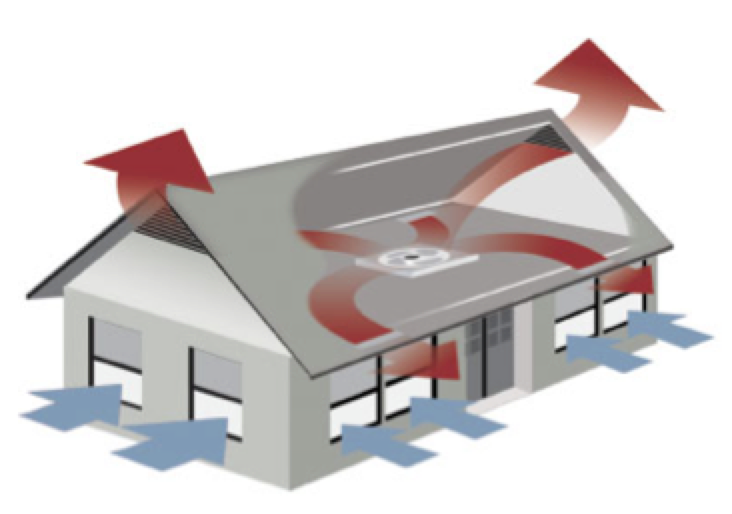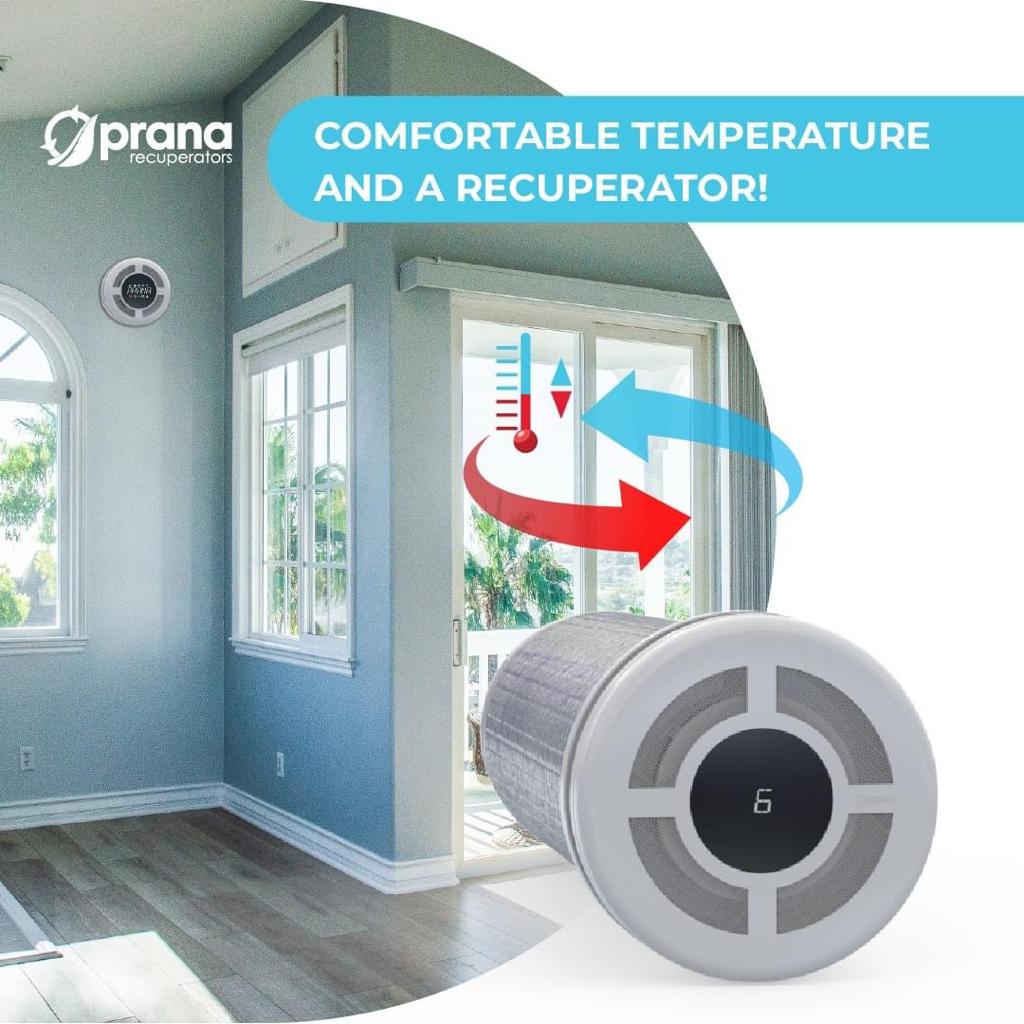Checking Out Cutting-edge Solutions for Optimal Home Air Flow Solutions
Home air flow plays a crucial function in maintaining health and wellness and convenience within living areas. With innovations in modern technology, ingenious services are emerging to maximize these systems. Smart air flow, power recovery ventilators, and advanced filtration are improving just how air high quality is managed - Home Ventilation Melbourne. Nevertheless, the combination of these technologies questions about their performance and flexibility in different home environments. What effects do these growths hold for future living standards?
The Value of Home Air Flow for Health and Convenience
Usually forgotten, home air flow plays an important role in keeping both wellness and comfort within household spaces. Sufficient air flow is crucial for the flow of fresh air, which helps to dilute interior toxins such as volatile organic substances, irritants, and smells. Without proper air flow, these impurities can gather, resulting in respiratory system problems and other illness. Furthermore, reliable air flow contributes to controling humidity degrees, preventing mold and mildew development and architectural damages. By making certain a balanced exchange of air, homeowners can take pleasure in an extra enjoyable interior setting, improving overall wellness. Furthermore, adequate ventilation can enhance power efficiency by lowering the demand for excessive home heating or air conditioning, eventually causing lower utility costs and a more sustainable space.
Smart Ventilation Systems: Harnessing Innovation for Effectiveness
Smart ventilation systems stand for a substantial improvement in home air administration, leveraging IoT combination for improved control. These systems not just promote power performance but also use remote surveillance capabilities, allowing users to maximize their interior atmospheres effortlessly. By utilizing technology, home owners can attain better air high quality while minimizing power usage.
IoT Assimilation Advantages
Exactly how can IoT combination change standard ventilation systems right into highly efficient wise remedies? By integrating Net of Things (IoT) innovation, ventilation systems can accomplish real-time tracking and control, enhancing their functional effectiveness. Sensing units placed throughout a home collect data on air top quality, temperature level, and humidity, enabling automated changes based on current conditions. This prompt responsiveness causes enhanced indoor air high quality and comfort levels. In addition, IoT-enabled systems can interact with various other clever home devices, producing a natural ecosystem that enhances energy use. Customers can additionally accessibility and handle their ventilation systems from another location by means of smart devices, providing ease and increased control. In general, IoT assimilation represents a considerable advancement, bringing intelligence and flexibility to standard ventilation practices.
Power Performance Features
As energy efficiency comes to be a critical focus in modern home layout, advanced ventilation systems use cutting-edge features that significantly decrease energy consumption. These wise air flow systems utilize sensors to check indoor air temperature, top quality, and humidity levels, automatically readjusting airflow to keep optimal problems. By employing power recuperation ventilators (ERVs), they recycle and record energy from outward bound air, minimizing home heating and cooling down demands. Variable rate followers even more improve efficiency by changing their operation based on real-time needs, protecting against unnecessary power waste - Home Ventilation Melbourne. Furthermore, programmable timers and occupancy sensors assure that ventilation operates only when needed, contributing to lower utility costs. Collectively, these features stand for a substantial advancement in producing energy-efficient and sustainable living atmospheres
Remote Surveillance Capabilities
What advantages do remote surveillance capacities bring to modern-day home air flow systems? These capacities permit homeowners to track indoor air top quality and system performance in genuine time, boosting overall effectiveness. By supplying information on temperature level, air, and humidity toxins, wise air flow systems allow aggressive changes, making sure optimal problems. On top of that, remote tracking assists in upkeep notifies, determining prospective problems prior to they escalate, therefore lowering repair costs and downtime. Users can access system analytics through mobile applications, enabling practical control even when away from home. This technical combination not just advertises energy effectiveness but additionally adds to a healthier living atmosphere. Ultimately, remote surveillance abilities stand for a significant improvement in home air flow, aligning with the expanding need for clever home technologies.
Energy Recovery Ventilators: Maximizing Energy Savings
Power healing ventilators (ERVs) play an important role in boosting home power effectiveness through effective warmth exchange. By moving thermal energy between incoming and outward bound air, these systems considerably reduce general power intake. This ingenious strategy not just maintains interior air top quality but additionally contributes to reduce energy costs.
Performance of Heat Exchange
While keeping indoor air high quality is important for health and convenience, the performance of warm exchange in energy recuperation ventilators (ERVs) plays an essential duty in maximizing power cost savings. The primary function of an ERV is to move warm and dampness in between outward bound and inbound jet stream, which enhances indoor conditions while reducing energy loss. High-efficiency warm exchangers can substantially decrease the tons on home heating and cooling down systems by recovering energy that would or else be wasted. The efficiency of these systems is usually determined by their core temperature exchange rates, which can vary based on style and materials utilized. By concentrating on innovative warmth exchange innovations, homeowners can boost their ventilation systems, leading to improved power efficiency and cost decreases in time.
Decreased Energy Consumption
Minimizing power usage is a vital advantage of energy healing ventilators (ERVs), as they successfully recycle thermal power from tired air. By transferring heat between outgoing and incoming jet stream, ERVs minimize the demand for added heating or air conditioning, leading to significant energy cost savings. This process not just minimizes utility expenses yet likewise reduces the ecological influence related to greater energy use. In addition, ERVs preserve constant interior air quality without endangering thermal comfort, creating a balanced living environment. By incorporating ERVs into home ventilation systems, homeowners can accomplish better power effectiveness, enabling a sustainable strategy to indoor air monitoring while taking advantage of lower power expenses. Ultimately, ERVs represent a compelling remedy for energy-conscious consumers.
Advanced Filtering Technologies for Cleaner Indoor Air
As interior air quality ends up being significantly identified as an important component of health and well-being, advanced filtration innovations are arising as crucial devices for guaranteeing cleaner environments. These modern technologies consist of high-efficiency particulate air (HEPA) filters, triggered carbon filters, and electrostatic precipitators, each created to effectively capture airborne pollutants, allergens, and unpredictable natural substances (VOCs) HEPA filters can trap particles as little as 0.3 microns, greatly minimizing irritants like dirt mites and pet dog dander. Triggered carbon filters excel in adsorbing smells and chemical vapors, adding to a fresher indoor atmosphere. Furthermore, electrostatic precipitators utilize electrical fees to eliminate fragments, offering an energy-efficient alternative. By incorporating these advanced filtering systems, homeowners can improve indoor air top quality and promote healthier home.
The Duty of Sensors in Optimizing Air Movement and High Quality
Just how can sensors change the management of interior air top quality? Sensing units play an essential role in navigate to this website improving airflow and enhancing interior environments. By continuously checking variables such as moisture, temperature level, and levels of pollutants, they supply real-time data that notifies ventilation systems. This details makes it possible for automatic adjustments to airflow, making sure sufficient flow and decreasing the accumulation of pollutants. In addition, progressed sensing units can identify particular air quality concerns, prompting prompt reactions to boost comfort and wellness. The assimilation of these gadgets right into ventilation systems permits a more effective and receptive management strategy, decreasing power usage while keeping suitable air quality. Eventually, sensors act as a crucial part in creating much healthier indoor rooms with precise airflow regulation.
Integrating Ventilation With Smart Home Systems
While several house owners seek benefit and efficiency, integrating ventilation systems with wise home modern technology provides a cutting-edge solution to taking care of indoor air high quality. By attaching air flow devices to smart home hubs, homeowners can automate air high quality surveillance and control air flow based upon real-time information. These systems can reply to adjustments in temperature, humidity, and contaminant degrees, making sure optimal indoor conditions. Smart thermostats can function in tandem with air flow systems to boost energy efficiency, minimizing prices while maintaining convenience. Property owners can additionally remotely control their air flow setups with mobile applications, offering adaptability and satisfaction. Ultimately, this combination not just simplifies monitoring but substantially boosts the overall living environment, making it a useful enhancement to modern-day homes.
Future Trends in Home Ventilation Solutions
Emerging innovations and enhanced awareness of indoor air quality are forming the future of home air flow services. One substantial trend is the combination of expert system, allowing systems to adjust air movement based on real-time information and occupancy patterns. Furthermore, power healing ventilators are acquiring grip, supplying efficient air exchange while decreasing power loss. Using eco-friendly products and layouts is likewise increasing, straightening with sustainability objectives. Smart sensors that monitor pollutants and moisture degrees are coming to be criterion, enabling house owners to maintain ideal indoor environments. In addition, scalable and modular systems are arising, supplying customizable choices for various home dimensions and arrangements. Home Ventilation Melbourne. Together, these improvements promise to improve convenience, efficiency, and health and wellness in residential rooms
Frequently Asked Concerns
How Commonly Should I Tidy My Home Ventilation System?

The regularity of cleaning a home ventilation system varies based on use and setting. Generally, it is recommended to clean up the system every three to 6 months to keep ideal air high quality and system performance.
Can Poor Air Flow Reason Mold And Mildew Development Indoors?

What Are the Indicators of Inadequate Home Air Flow?
Indicators of insufficient home ventilation consist of persistent odors, increased moisture levels, condensation on home windows, visible mold and mildew growth, and a general sensation of stuffiness. These indications commonly suggest that air blood circulation wants for preserving a healthy and balanced indoor atmosphere.
Just How Can I Boost Ventilation in Older Houses?
To enhance air flow in older homes, one could consider setting up exhaust followers, utilizing natural air flow with windows, sealing spaces for better air control, click to find out more and incorporating air purifiers to enhance indoor air high quality successfully.
Are Do It Yourself Ventilation Solutions Effective and Safe?

Smart air flow, energy recovery ventilators, and progressed purification are improving just how air quality is taken care of. As power efficiency becomes an important emphasis in modern home style, progressed air flow systems offer ingenious features that substantially reduce energy usage. By incorporating ERVs right into home ventilation systems, house owners can achieve greater energy effectiveness, making it possible for a sustainable approach to indoor air monitoring while profiting from reduced power costs. The integration of these gadgets right into air flow systems permits for an extra effective and receptive monitoring technique, decreasing energy intake while keeping suitable air high quality. While many homeowners look for benefit and efficiency, incorporating ventilation systems with clever Continued home modern technology provides an innovative remedy to handling interior air high quality.